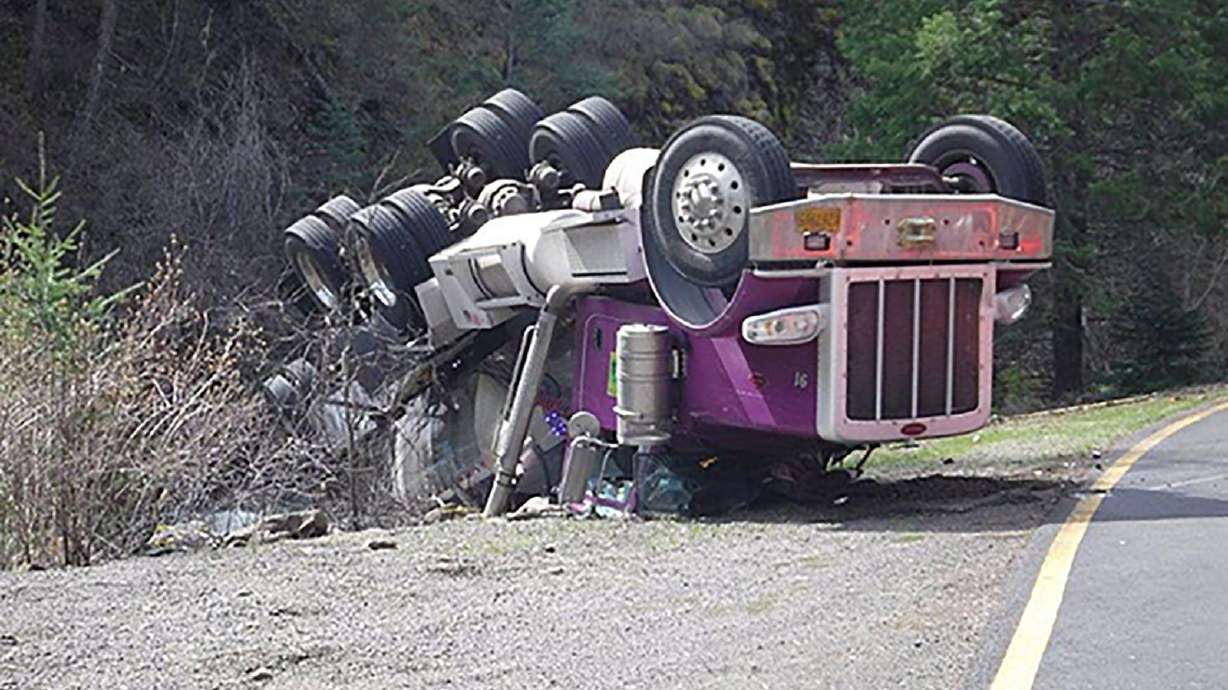Estimated read time: 2-3 minutes
This archived news story is available only for your personal, non-commercial use. Information in the story may be outdated or superseded by additional information. Reading or replaying the story in its archived form does not constitute a republication of the story.
LA GRANDE, Ore. — When a truck carrying over 100,000 salmon crashed and overturned in Oregon, it might have spelled disaster for the fish aboard, which were intended to replenish local populations in the Imnaha River.
But in a miraculous twist of fortune, over 70,000 of the fish landed in a nearby creek and are expected to survive.
The accident took place on March 29 in northeast Oregon, according to a news release from the Oregon Department of Fish and Wildlife. The truck was carrying 102,000 spring Chinook smolts, or young salmon, in the life phase in which they transition from freshwater to the open ocean.
"The accident occurred on a sharp corner with the 53-foot truck rolling onto the passenger side, skidding on its side on the pavement, and then going over a rocky embankment causing it to roll onto its roof," says the news release.
The driver received minor injuries, according to the department.
The truck overturned close to Lookingglass Creek, a tributary of the Grande Ronde River. Around 77,000 young salmon made it into the creek and are expected to return in future years to spawn.
Not all of the fish were so lucky: 25,529 smolts died. Their bodies were recovered either in the tanker or on the streambank, according to the news release.
The salmon were meant to be released in the Imnaha River, a 77-mile long watercourse in the Wallowa-Whitman National Forest. The smolts lost constitute about 20 percent of the total salmon that will be released in the river this year, says the news release. Because of the loss, "Fishery managers expect to see about 500-900 fewer adult fish returning in 2026 and 2027," according to the department.
Salmon are raised at Lookingglass hatchery, then transported and released to Imnaha to help combat threats to their population, according to Seth White, a professor in the department of Fisheries, Wildlife and Conservation Sciences at Oregon State University and director of the Oregon hatchery Research Center. "The Imnaha River spring Chinook Salmon population depends on hatcheries to sustain their numbers," he told CNN in an email.
He explained that salmon are resilient animals, which will help many of them survive their unplanned tumble into the creek.
"In many ways salmon are very resilient and that's why they survived millennia in a geologically active part of the world," he told CNN. "Many of the salmon that got spilled into the creek will likely survive because they're adaptable—within limits—and can learn new environments quickly."









